Abstract
Ten lots of diced cured ham, packed in cans, were inoculated with approximately 106Clostridium botulinum spores per can. Each lot was seeded with a different strain (five type A and five type B strains). All cans were irradiated to various dose levels with Co60. Evidence provided by swelling, toxicity, and recoverable C. botulinum with 6,350 cans demonstrated that: (i) 4.5 Mrad was more than adequate as a sterilization dose; (ii) the minimal experimental sterilizing dose (ESD) based on nonswollen nontoxic endpoints was 2.0 < ESD ≤ 2.5 Mrad, and based on non-spoiled sterile cans was 3.0 < ESD ≤ 3.5 Mrad (the latter was supported by the computed theoretical 12D dose); (iii) D values calculated from botulinal survival data indicated that, as a group, the type A strains were more radioresistant than type B strains; strains 12885A and 41B, with respective D values of 0.242 and 0.175, represented the most resistant of each type; (iv) swollen cans did not always contain toxin, nor were toxic cans always swollen; (v) viable C. botulinum can exist for 6 months at 30 C without producing visible or toxic spoilage at doses of 3.0 Mrad and lower, including, in some instances, 0.0 Mrad; and (vi) a phenomenon similar to heat activation of spores occurred at sublethal radiation doses.
Full text
PDF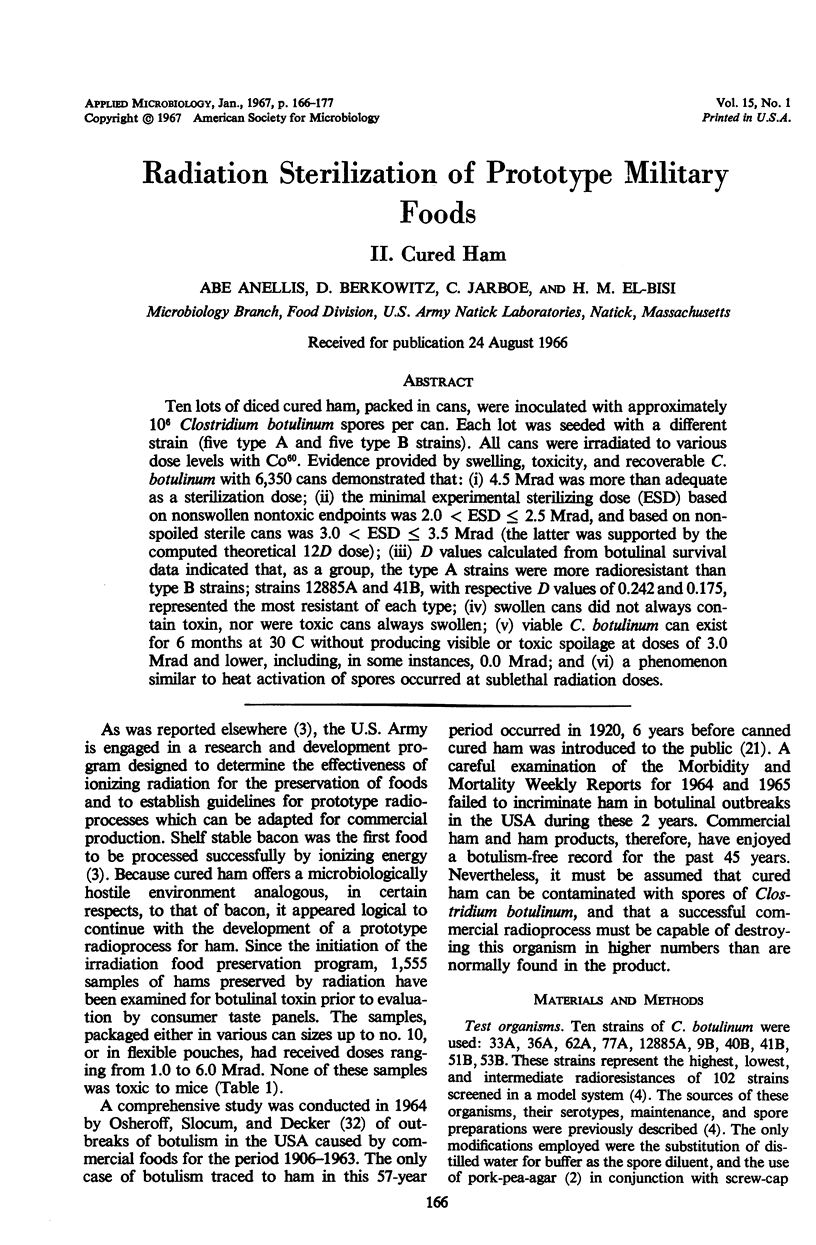

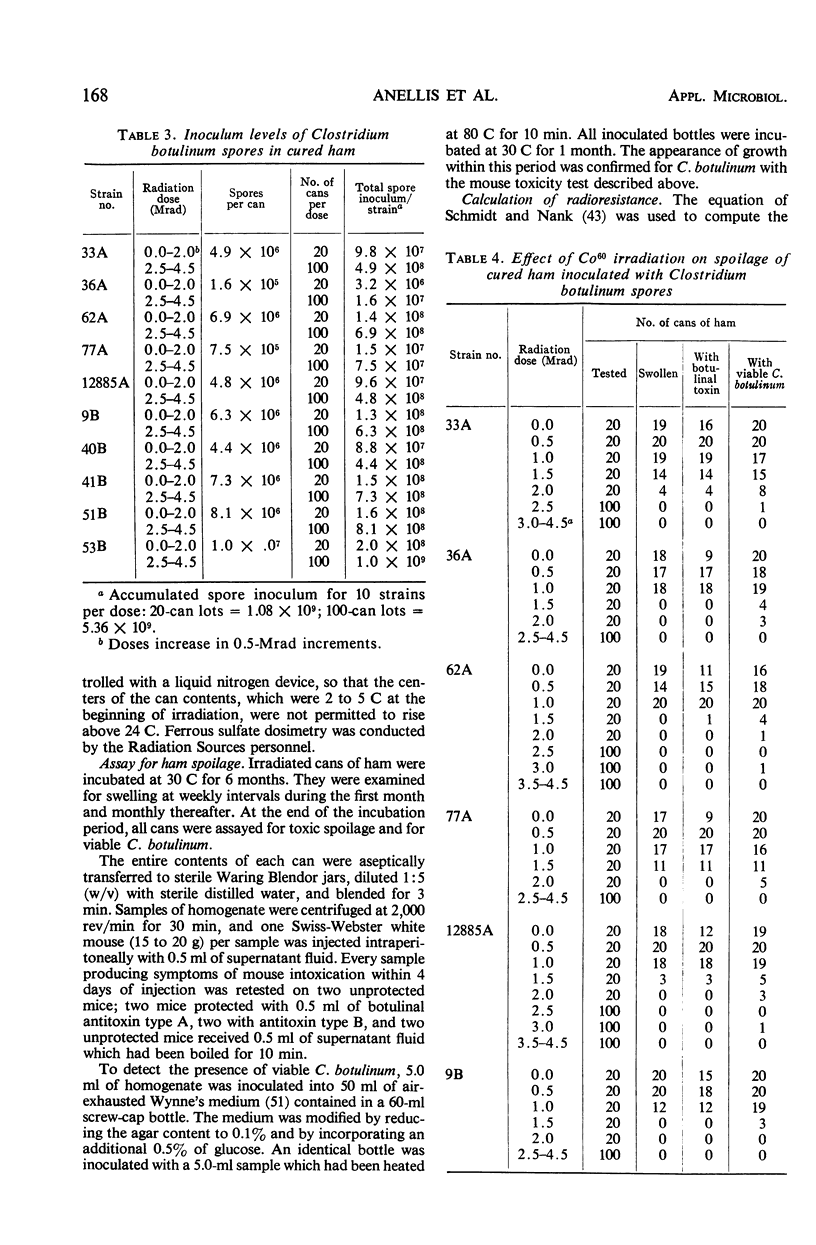
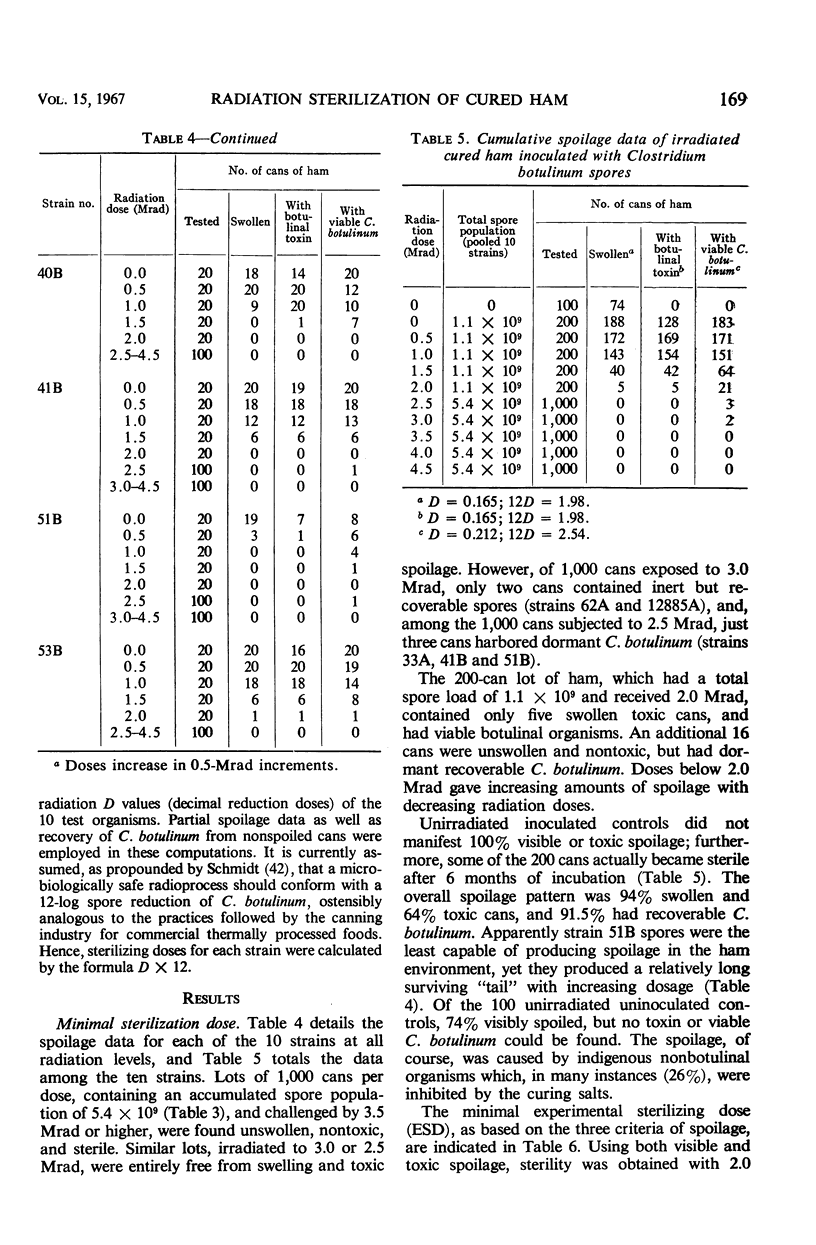
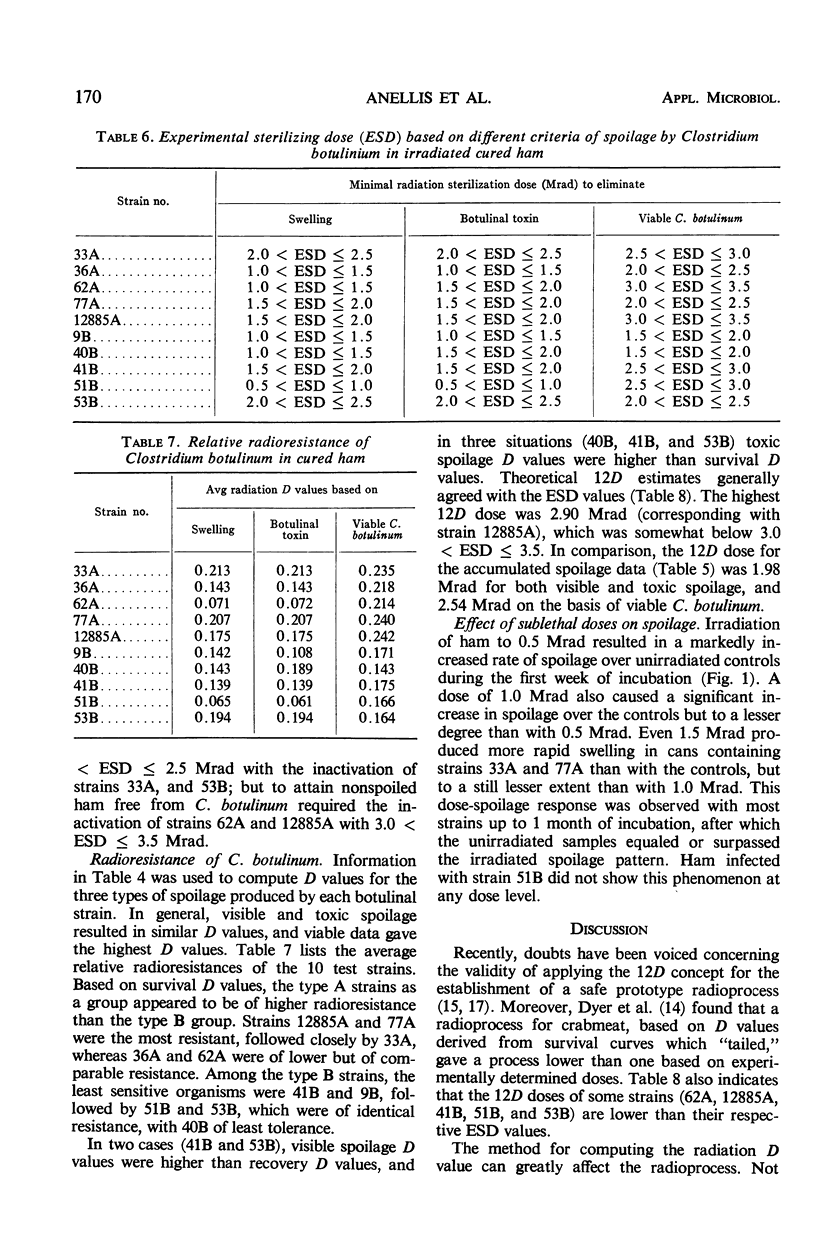
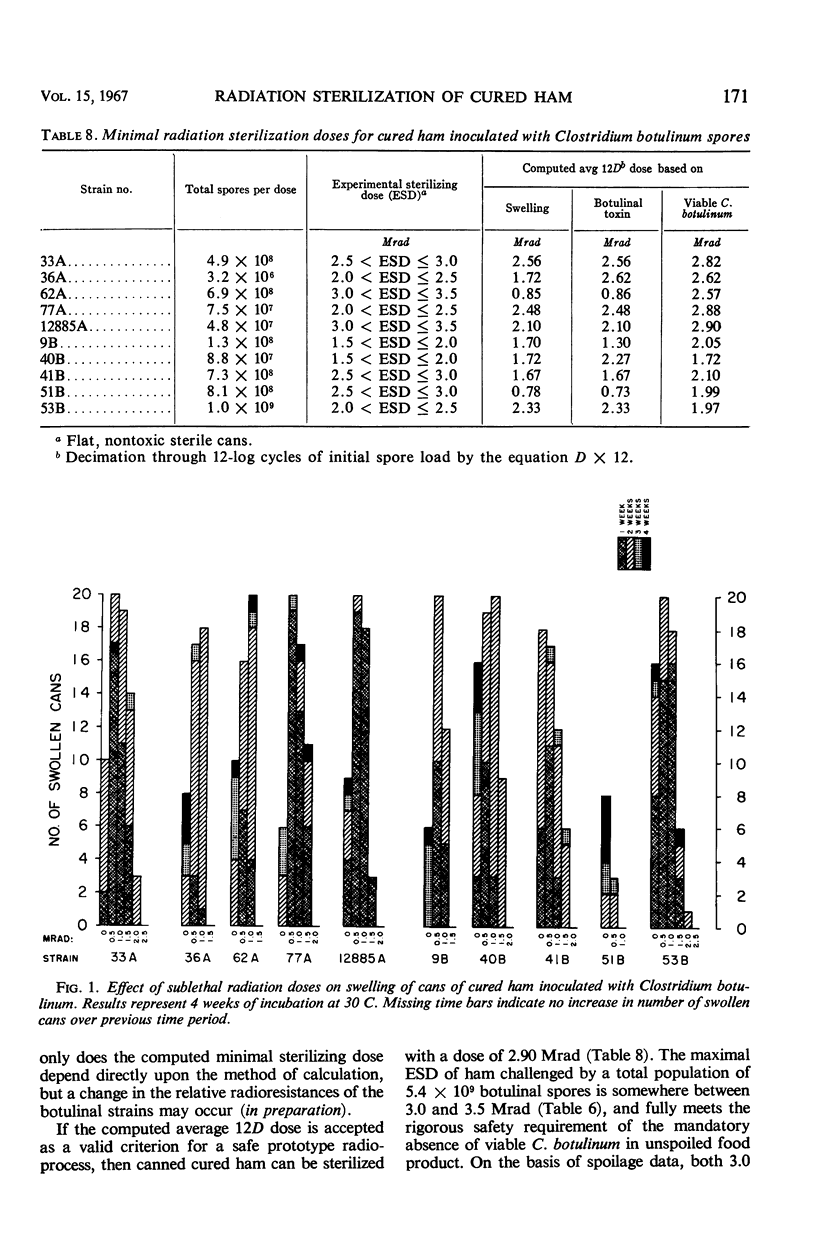
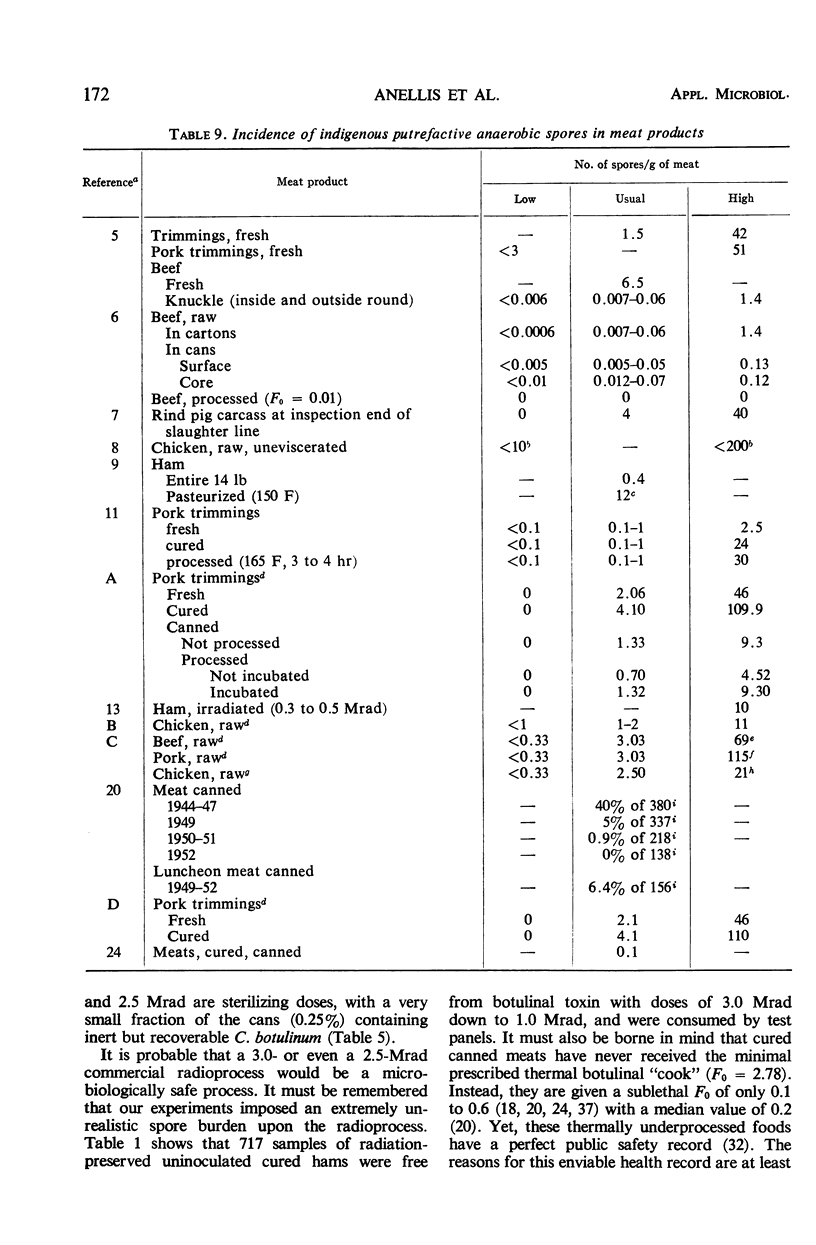
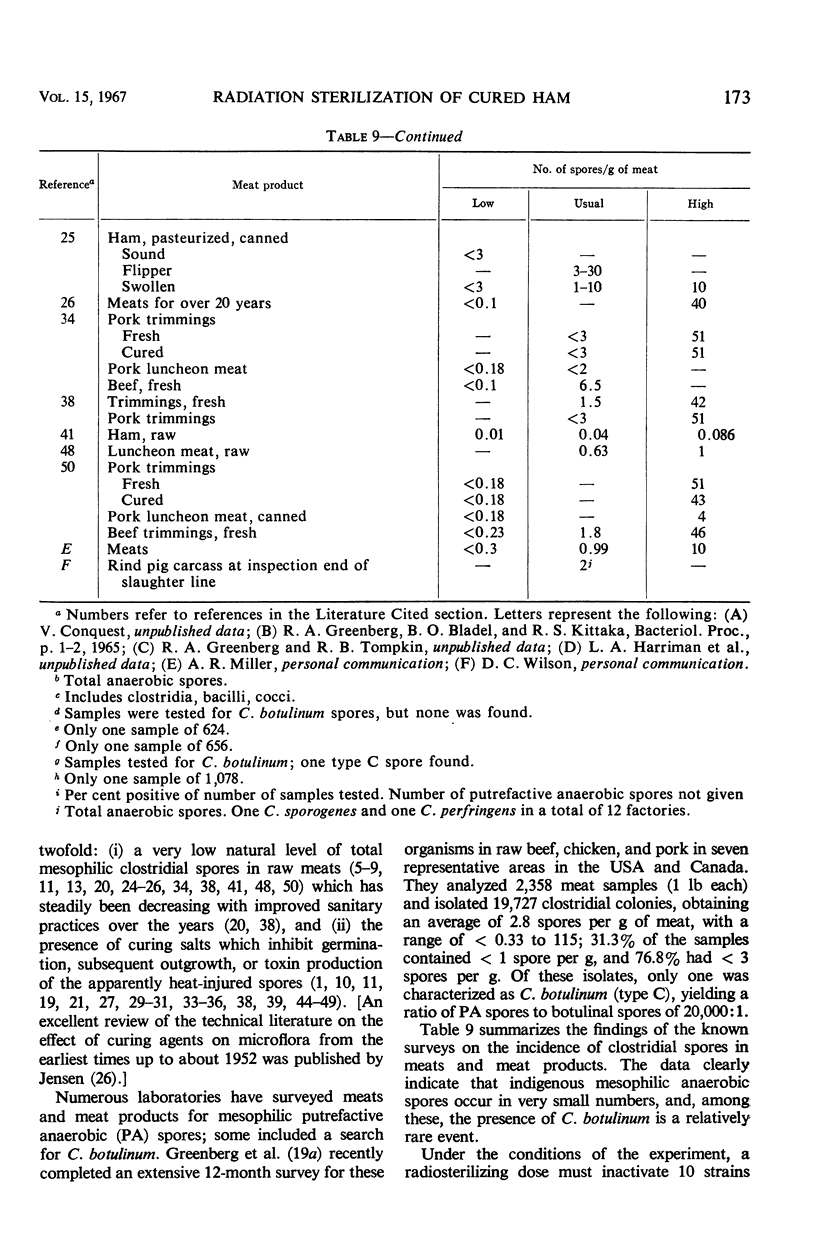
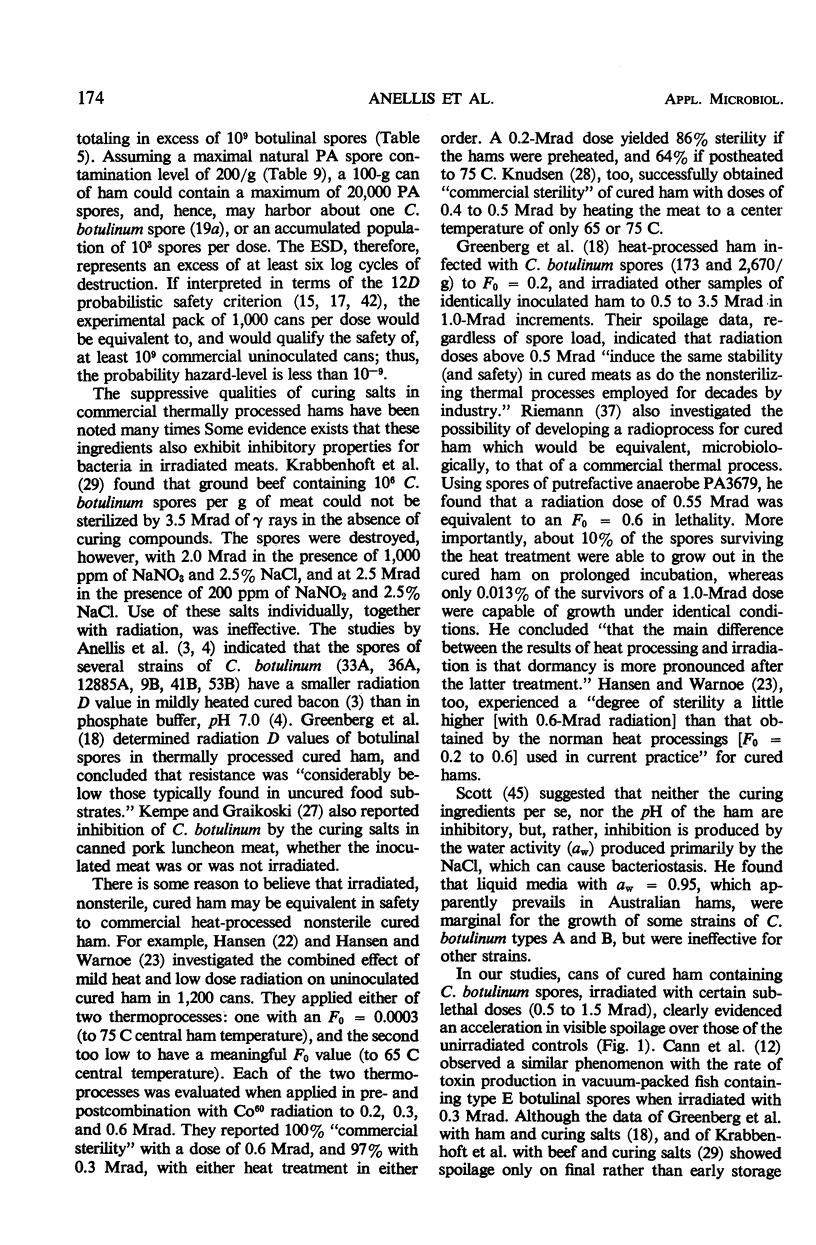

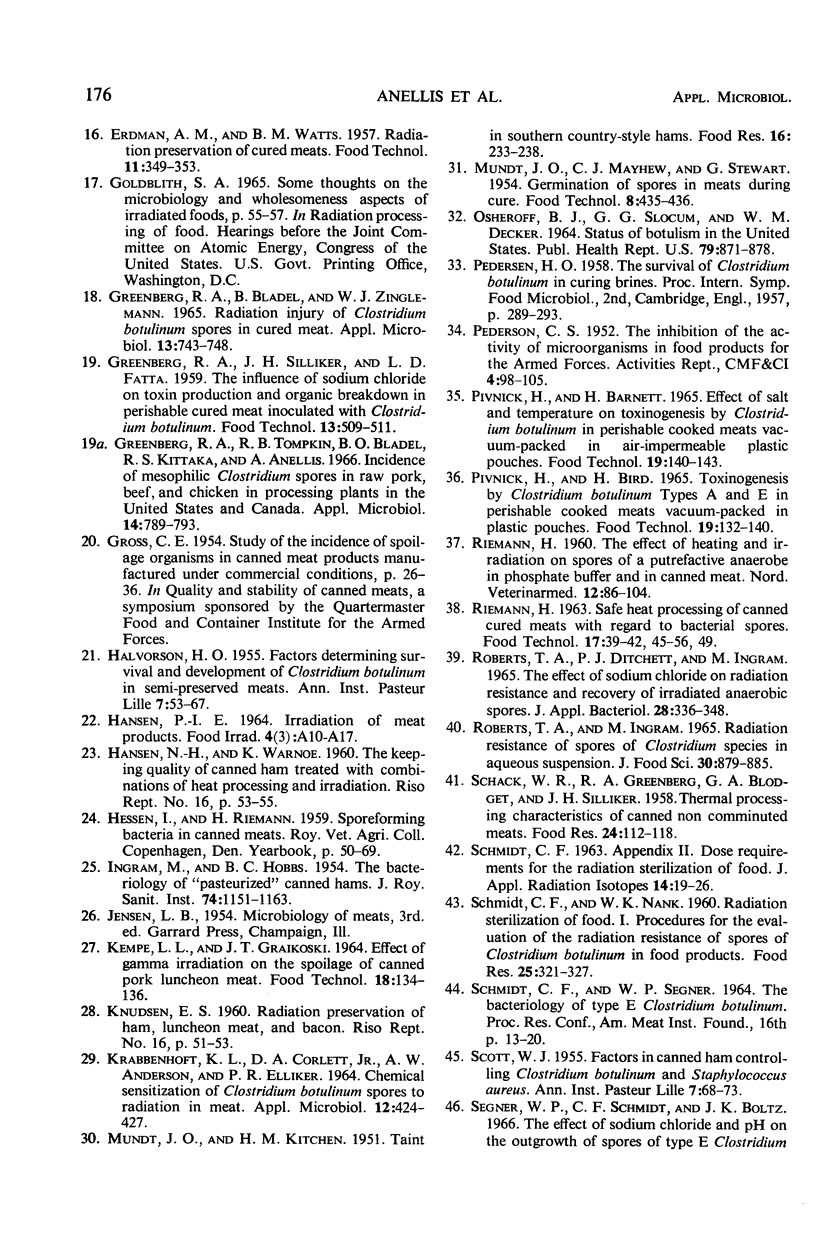
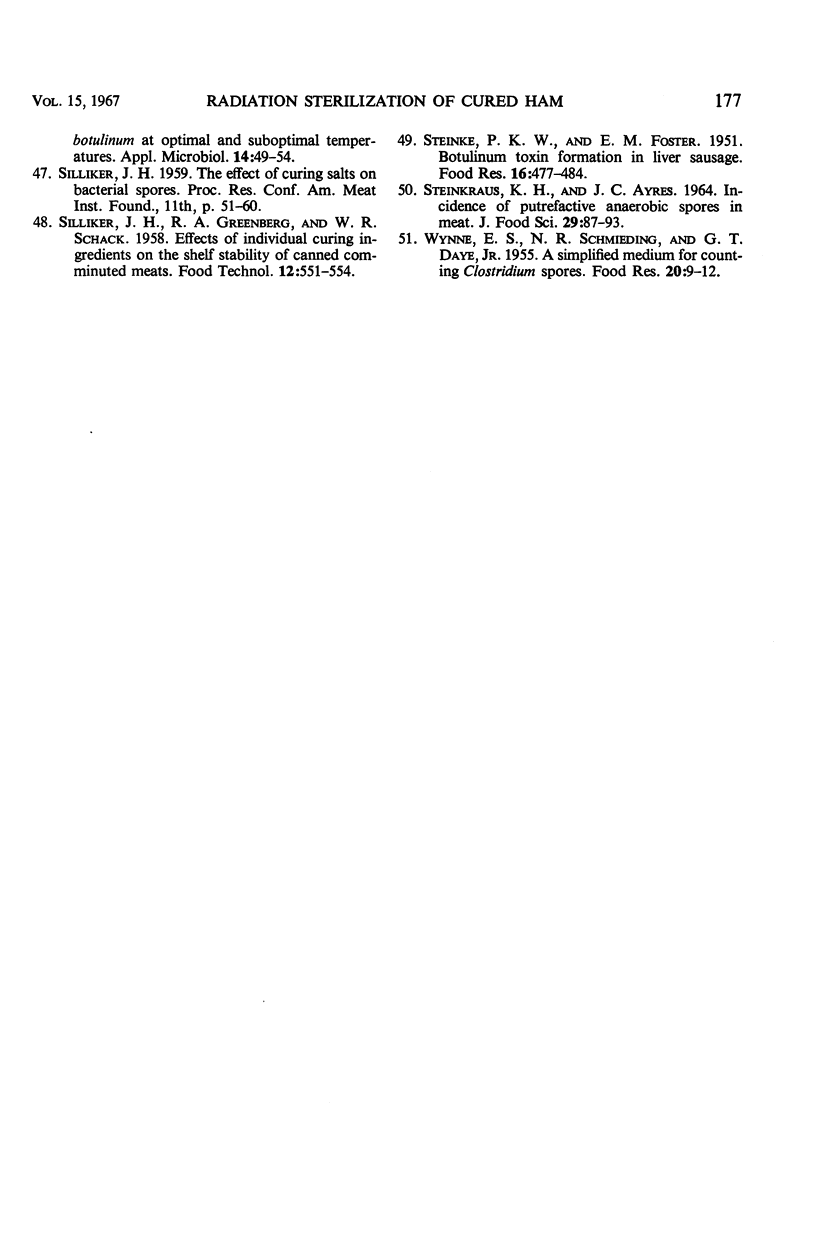
Images in this article
Selected References
These references are in PubMed. This may not be the complete list of references from this article.
- ANDERSEN A. A. A rapid plate method of counting spores of Clostridium botulinum. J Bacteriol. 1951 Oct;62(4):425–432. doi: 10.1128/jb.62.4.425-432.1951. [DOI] [PMC free article] [PubMed] [Google Scholar]
- ANELLIS A., GRECZ N., HUBER D. A., BERKOWITZ D., SCHNEIDER M. D., SIMON M. RADIATION STERILIZATION OF BACON FOR MILITARY FEEDING. Appl Microbiol. 1965 Jan;13:37–42. doi: 10.1128/am.13.1.37-42.1965. [DOI] [PMC free article] [PubMed] [Google Scholar]
- ANELLIS A., KOCH R. B. Comparative resistance of strains of Clostridium botulinum to gamma rays. Appl Microbiol. 1962 Jul;10:326–330. doi: 10.1128/am.10.4.326-330.1962. [DOI] [PMC free article] [PubMed] [Google Scholar]
- Cann D. C., Wilson B. B., Hobbs G., Shewan J. M. The growth and toxin production of Clostridium botulinum type E in certain vacuum packed fish. J Appl Bacteriol. 1965 Dec;28(3):431–436. doi: 10.1111/j.1365-2672.1965.tb02174.x. [DOI] [PubMed] [Google Scholar]
- Dyer J. K., Anderson A. W., Dutiyabodhi P. Radiation survival of food pathogens in complex media. Appl Microbiol. 1966 Jan;14(1):92–97. doi: 10.1128/am.14.1.92-97.1966. [DOI] [PMC free article] [PubMed] [Google Scholar]
- Greenberg R. A., Bladel B. O., Zingelmann W. J. Radiation injury of Clostridium botulinum spores in cured meat. Appl Microbiol. 1965 Sep;13(5):743–748. doi: 10.1128/am.13.5.743-748.1965. [DOI] [PMC free article] [PubMed] [Google Scholar]
- Greenberg R. A., Tompkin R. B., Bladel B. O., Kittaka R. S., Anellis A. Incidence of mesophilic Clostridium spores in raw pork, beef, and chicken in processing plants in the United States and Canada. Appl Microbiol. 1966 Sep;14(5):789–793. doi: 10.1128/am.14.5.789-793.1966. [DOI] [PMC free article] [PubMed] [Google Scholar]
- HALVORSON H. O. Factors determining survival and development of Clostridium botulinum in semi-preserved meats. Ann Inst Pasteur Lille. 1955;7:53–67. [PubMed] [Google Scholar]
- INGRAM M., HOBBS B. C. The bacteriology of pasteurized canned hams. J R Sanit Inst. 1954 Dec;74(12):1151–1163. doi: 10.1177/146642405407401216. [DOI] [PubMed] [Google Scholar]
- KRABBENHOFT K. L., CORLETT D. A., Jr, ANDERSON A. W., ELLIKER P. R. CHEMICAL SENSITIZATION OF CLOSTRIDIUM BOTULINUM SPORES TO RADIATION IN MEAT. Appl Microbiol. 1964 Sep;12:424–427. doi: 10.1128/am.12.5.424-427.1964. [DOI] [PMC free article] [PubMed] [Google Scholar]
- MUNDT J. O., KITCHEN H. M. Taint in Southern country-style hams. Food Res. 1951 May-Jun;16(3):233–238. doi: 10.1111/j.1365-2621.1951.tb17376.x. [DOI] [PubMed] [Google Scholar]
- OSHEROFF B. J., SLOCUM G. G., DECKER W. M. STATUS OF BOTULISM IN THE UNITED STATES. Public Health Rep. 1964 Oct;79:871–878. [PMC free article] [PubMed] [Google Scholar]
- Roberts T. A., Ditchett P. J., Ingram M. The effect of sodium chloride on radiation resistance and recovery of irradiated anaerobic spores. J Appl Bacteriol. 1965 Aug;28(2):336–348. doi: 10.1111/j.1365-2672.1965.tb02162.x. [DOI] [PubMed] [Google Scholar]
- SCOTT W. J. Factors in canned ham controlling Cl. botulinum and Staph. aureus. Ann Inst Pasteur Lille. 1955;7:68–74. [PubMed] [Google Scholar]



